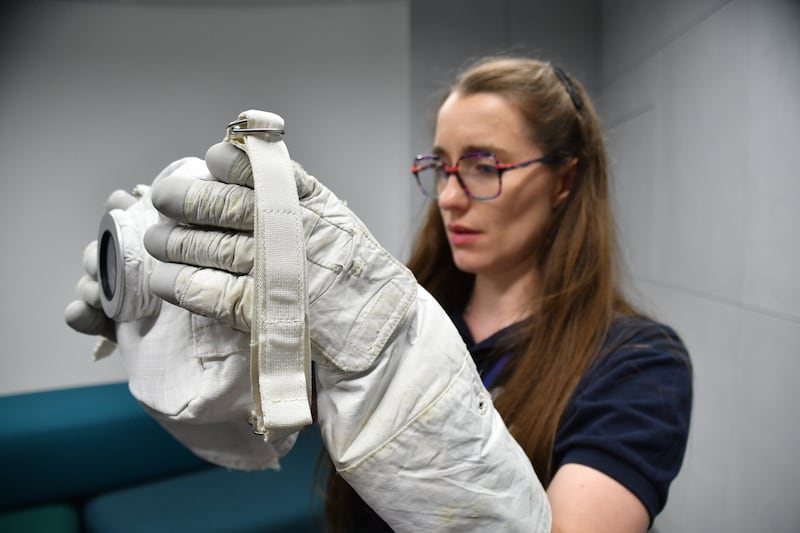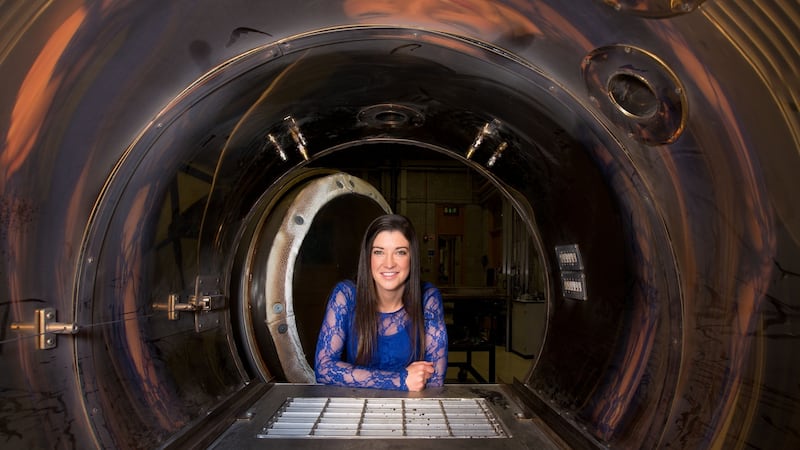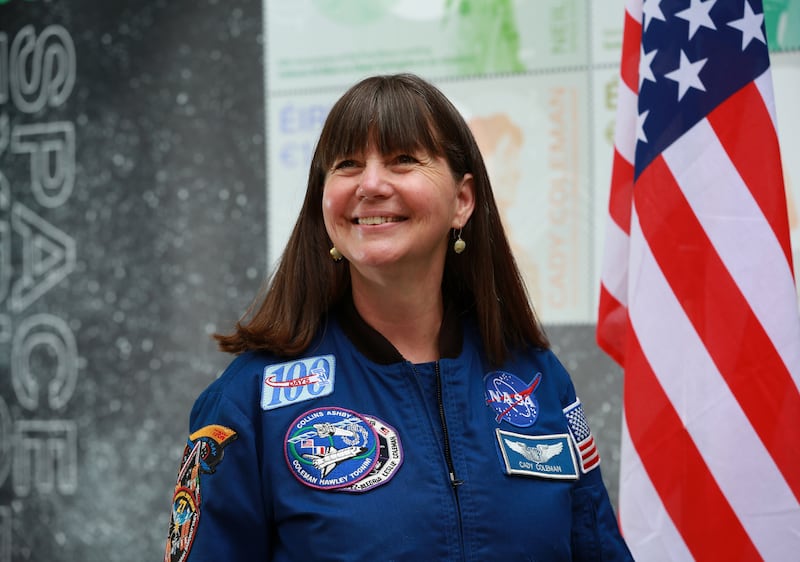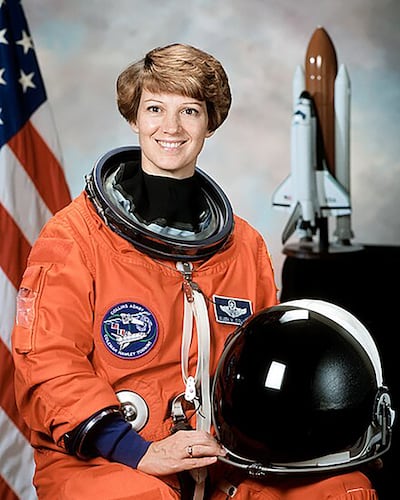Since the human space programme began in the late 1950s, more than 650 people have reached the altitude of space. But only 77 of those spacefarers, a mere 11 per cent, were women.
Today the space sector is making efforts to level the playing field. Nasa’s new class of astronauts gives parity to men and women, and two of the five European Space Agency (ESA) graduating “Class of 2022″ astronauts, which includes Antrim-born Rosemary Coogan, are women.
“I think it’s really important to have representation in space, not just men and women, but all sorts of diversity,” says Coogan. “Women make up a huge proportion of the people who are interested in space, and are very capable of contributing to space.”
How does Ireland fare in women’s spacefaring achievements?
READ MORE
While Coogan is supported by the UK Space Agency, she brings Ireland one step closer to having its first ESA astronaut. In April 2024, ESA’s director general Josef Aschbacher confirmed that all five ESA astronauts would embark on missions to the International Space Station (ISS) before 2030. A month later, two of Coogan’s colleagues were assigned their ISS missions, planned for 2026.
A date has not yet been announced for Coogan’s space flight. Until then she is happy to remain at the European Astronaut Centre in Cologne, Germany, where she is working on a number of exciting projects as part of the Artemis programme, which prepares for missions to the moon.
The plan is for an international space station called the Gateway to orbit the moon, and Coogan is helping ESA to develop the habitation module, or I-Hab, that will provide living quarters for the astronauts.
“I have been helping to support some of the human-in the-loop testing for the I-Hab,” she explains.

Until recently, Cork-born photographer and artist Rhiannon Adam was almost due to visit our celestial next-door neighbour. In 2018, SpaceX chief executive Elon Musk offered Japanese billionaire Yusaku Maezawa, aka MZ, a trip to the moon in exchange for investing in Starship, SpaceX’s most ambitious spacecraft.
MZ recruited six artists to join him on his dearMoon project, including Adam. Overnight her life changed. She was flown around the world, attended SpaceX Starship test flights and witnessed MZ’s launch from Baikonur to the International Space Station.
However, in late April 2024, just 18 months in to dearMoon, MZ pulled out of the deal due to uncertainties around when Starship would be ready. Without warning, Adam’s lunar dreams and new life had ended and she is still processing the abrupt change.
“It’s not just the thing being taken away,” she says. “It’s the way that everyone speaks to you and every relationship that you have in your life.”
Adam remains committed, though, to the underlying reasons for wanting to go to space in the first place.
“It’s ironic to me to be an artist that makes work about the abuse of power and to make long-form projects that deal with that and then to end up in this circumstance,” she says. “But I’m not giving up on the importance of what our mission values were.”
Coogan and Adam are not the only Irish-born people with plans to leave the planet in a spacecraft. Last month, Mayo native and aeronautical engineer Dr Norah Patten announced that she will be taking to the skies in 2026 on a suborbital Virgin Galactic flight.
Patten holds a PhD in aeronautical engineering and works with Réaltra Space Systems as its business development manager. She is also well-known in Ireland for her dream to be the first Irish person in space.

“The research space flight is a one-day suborbital space flight and from take-off to landing it’s less than two hours,” Patten told RTÉ. “But we’ll be using every single moment of that to try and maximise the research outputs and I’ll be testing a variety of experiments in space.”
A suborbital flight does not orbit Earth, but it does approach the 100km-high Kármán Line, the internationally recognised altitude for crossing into space. On its suborbital journeys, Virgin Galactic promises its passengers a view of Earth from 82km high, about 10 times the altitude at which most typical passenger airlines cruise.
At such heights, Virgin passengers unbuckle their seat belts, experience microgravity for four to five minutes and witness a stunning view of the curvature of the Earth. The spacecraft then slowly glides back down to Earth, completing the two-hour experience of a lifetime.
It’s expected that two other women space and science ambassadors will be with Patten on the planned suborbital flight in 2026 – Canadian neuroscientist and physician Shawna Pandya and US science communicator Kellie Gerardi.
All three are alumni of Project PoSSUM, an upper-atmosphere research group that has been running aeronautics and aeronomy courses since 2015. Project PoSSUM operates the International Institute of Aeronautical Sciences (IIAS), and the three women earned their Virgin Galactic seats through an IIAS contract, so they will complete experiments on the flight for the institute.
IIAS seeks to enable citizen science research and training. The institute provides courses in bioastrobiotics, or how microgravity affects living systems, aeronautics, aeronomy or upper atmosphere studies, and space flight operations. Its courses cost between $995 and $5,000 and some are taught by Pandya, director of the Space Medicine Group. Gerardi is director of Human Spaceflight Operations for IIAS and Patten is its bioastronautics researcher.
Geraldi carried out IIAS research on a previous Virgin Galactic suborbital flight. She looked at fluid behaviour during five minutes of microgravity, and she promises on her Instagram page that a publication of her research findings is due soon.

Getting to Earth’s suborbit is a costly mission, though the price for consumers is coming down. Virgin currently has about 800 customers for such flights, many of whom paid between $200,000 and $250,000 over a decade ago for a flight to space. In June, Virgin suspended commercial operations until at least 2026 to focus on developing a next-generation vehicle, Delta.
What is it about getting to space that has such appeal?
“I think maybe as a space scientist, I adore space,” says Coogan. “Hearing my [astronaut] colleagues talk about going to space, and the thought of being able to experience it myself and then talk about it myself is definitely something I dream of.”
For Adam, the dream is to bring people together through space and art. “I believe that art can inspire world peace,” she says. “And I’m going to continue to make projects that connect to that idea.”
While no one from Ireland has travelled to space yet, some of the Irish diaspora have made their mark there. Retired Nasa astronaut of Irish descent Cady Coleman spent more than 180 days in space. Proud of her Irish roots, she brought her flute with her on every mission and, to celebrate St Patrick’s Day in 2011, streaming live from the ISS, she played a 100-year-old flute and tin whistle belonging to Matt Molloy and Paddy Moloney of The Chieftains. Eight years later, on July 21st, 2019, as part of RTÉ's celebration of the Apollo moon landings, Coleman met and performed with The Chieftains.

Sometimes for a woman to get to space it takes time and dedication to the dream. When NASA astronaut of Irish descent Eileen Collins went on her first space shuttle mission in 1995, one of the women she invited as a VIP for the launch was Wally Funk. A skilled pilot and aviator, Funk applied three times to be an astronaut but was turned down each time. She devoted her whole life to promoting science for girls and never gave up on her dream of flying to space. That dream came true in 2021 when Blue Origin invited Funk on the maiden suborbital launch of its New Shepard rocket. She was 82 years old.
Britain’s first person in space, Helen Sharman, has a similarly broad and philosophical view. She still remembers the insights that struck her more than 30 years ago, when she and colleagues viewed Earth from the Mir space station.
“The thing that we did more than anything was gather around the biggest window we could find and together just look out and talk about what we could see,” she says.
“It’s beautiful. It’s tantalisingly attractive. We talked about the people that we remember – our friends, family, our loved ones. But the other thing I remember was thinking about the interconnectedness of everything on Earth. It’s so obvious how what we do on one side of our planet affects what happens on the other.”
A pivotal day celebrating the achievements of women in space occurred on October 18th, 2019, when Nasa astronauts Christina Koch and Jessica Meir completed the first ever all-woman spacewalk at the International Space Station.

“Spacewalks are the riskiest thing that we do,” explains Meir, who is now an official crew member of the Artemis programme. “So at the time, I was 100 per cent focused on just making sure that I could get the job done, and that Christina and I could keep each other safe.”
It took some time for Meir and Koch to reflect on the significance of that spacewalk. “I really didn’t process it until afterward,” says Meir. “And then I realised that none of it would have been possible without the work of all those generations of women and minorities. And so for me, it was a huge moment of triumph for them. I hope that they were the ones that were truly revelling in that moment and celebrating that moment because we owed it all to them.”
Condescending cosmonauts
The first woman in space, Valentina Tereshkova, blasted off from Baikonur cosmodrome in 1963 and completed 49 orbits around Earth. But it would take another 19 years before Svetlana Savitskaya joined the crew on the Salyut 7 space station.
Flight engineer Valentin Lebedev welcomed her on board with some laboured jokes, saying there was an apron for her and pointing to the kitchen area of the craft. Two years later Savitskaya became the first woman to complete a spacewalk.
Helen Sharman became the first British person in space when she completed an eight-day mission conducting experiments on board Russia’s Mir space station in 1991. However, 16 years later, media in the UK overlooked her achievement, calling ESA astronaut Tim Peake the first British person in space after he launched to the International Space Station in late 2015. His correct title is first British ESA astronaut.
- Sign up for push alerts and have the best news, analysis and comment delivered directly to your phone
- Join The Irish Times on WhatsApp and stay up to date
- Listen to our Inside Politics podcast for the best political chat and analysis












